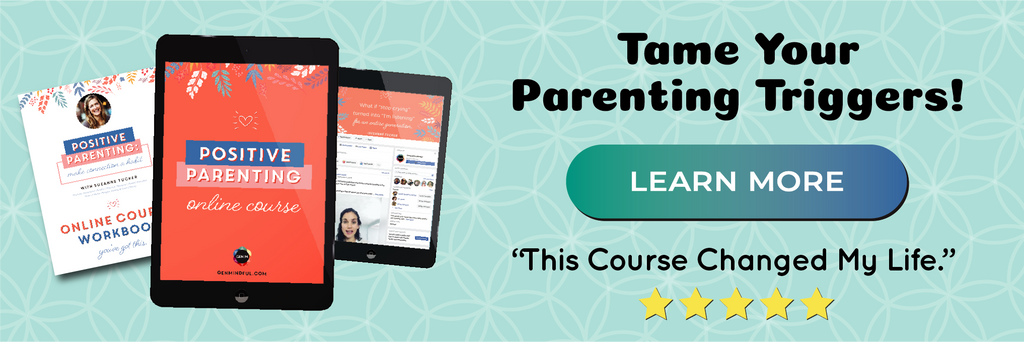
By Viki de Lieme
Undoubtedly, the most frustrating moments in parenting are those that happen to us every day.
The everyday screen time battle.
The repetitive "I don't want lunch. Give me candy!" struggle.
The redundant "Nooooo, I don't want to go to sleep!!" wrangle.
The everlasting "MINE!!!" shoutouts.
You get it. We expect those things to happen; we know they will happen, and when they do happen, we just don't want to deal with them.
I get it. Believe me. I've been there, too. And then, I took three steps that empowered me to make a real, beneficial, and positive change to the way I show up when these occurrences happen. But first, let's start with why it is so frustrating.
The Root Cause Of Frustration
When I ask parents to look into their frustration, understand what's causing it, and see it at face value, they are often confused. Most first-answers have to do with "them" - the kids. They're not listening. They're not cooperating. They're not eating/sleeping/behaving the way we'd like them to.
When we view our emotions this way, we give our little, innocent, immature children responsibility for our feelings. We are giving them the power to decide how we feel. And they take that power, but they don't know what to do with it, and we all get frustrated.
Reclaim Your Power
Here's the first key to peace of mind: you are the only one responsible for your feelings. No one, but you, has the power to cause you to feel. Your emotions are yours, you manage them, And your thoughts are the ground your emotions spring in.
When you're telling yourself, "Oh no, not again," or "I just can't handle it right now," or "Why does it have to happen every day?" you're sowing seeds of frustration and impatience that grow and grow, until you can no longer see the beautiful sky above.
Three Steps To Shift From Frustration To Connection
The words we use create our experience, yet we often overlook them. We think automatically; we speak automatically, and then we can't understand why we feel out of control over our life experiences.
The following three simple steps will show you how you can quickly flip these everyday frustrations into opportunities for connection, mutual understanding, and growth.
Step #1: Connect. When we connect to ourselves and the people behind the frustration, the message we speak is one of understanding and compassion.
Step #2: Communicate. When we communicate messages coming from a place of connection, our communication is welcomed and met with the same energy.
Step #3: Cooperate. When we cooperate with our children's needs, they cooperate with ours.
The Three Steps In Real Life
It wasn't too long ago that I noticed that our mornings with Ilay, age six, hopped on the challenging train and its speed increased as days passed. Ilay needed more time to do his desired things in the morning like play, which left less time for the mandatory tasks like getting dressed and out the door. Jon and I found ourselves frustrated and impatient before the day had even started. Since we were frustrated and impatient, Ilay was less inclined to cooperate with us, which led to more meltdowns, power struggles and disconnection. All of this was everything but Mindful. And I took action.
Step #1: Connect
One evening, when everyone was already sleeping, I took a pen and paper and wrote down what was important to me.
- I want everyone to get dressed and ready in a fun and connected manner and leave the house at ease.
- I want everyone to have the time to do everything they want and still leave the house in time for school and work.
I then asked myself what Ilay wanted, and I came up with these:
- Time to dance
- Time to play
- Time for two bowls of cereal
- Something to do with Pokemon cards.
I took the time to connect to his needs as preparation for the next step.
Step #2: Communicate
The next evening I asked Ilay to come and sit with me, and I asked him if he was willing to enter "listening mode" for a few minutes. He said no (which is fine), and I asked him to come to me when he had a few listening minutes.
When he came (and he did), I told him how I felt. I told him I was feeling frustrated with our mornings because I wanted everyone to do their thing AND leave the house on time and with a smile. Do you want that for me? He said, "yes."
I asked him, "What's important for you in the morning?" He said a few things in line with what I thought he'd say, and I told him that I wanted that for him. The following day we were ready for the next step.
Step #3: Cooperate
Cooperation was easy with a deep understanding of each other, a feeling of clarity regarding expectations, and a sense of being seen and heard.
I celebrated Ilay's actions and reminded him of my desires. He figured it out himself. He danced around, then got dressed. He played with his Pokemon cards, then brushed his teeth. He ate his cereal, and we were ready to go.
An action in my direction - an action in his; beautiful balance obtained in three steps: connect, communicate, cooperate.
** Viki de Lieme is a life and parenting coach, specializing in Nonviolent Communication and Mindfulness. Combining these two practices, Viki brings the worlds of words and actions together and teaches how to live and parent with intention and clarity.
• • •
Generation Mindful creates educational tools, toys, and programs that nurture emotional intelligence through play and positive discipline. Get a FREE Time-In Starter Kit when you sign up to become a GENM member today!
Join us and receive positive parenting tools and support in your inbox each week.





Leave a comment